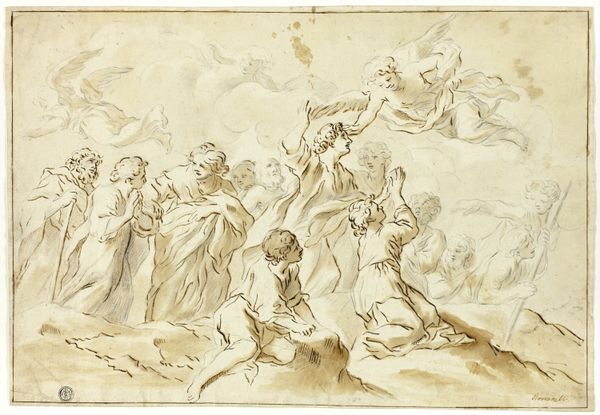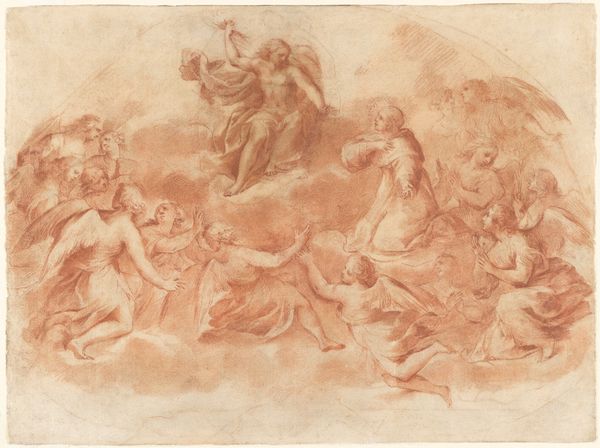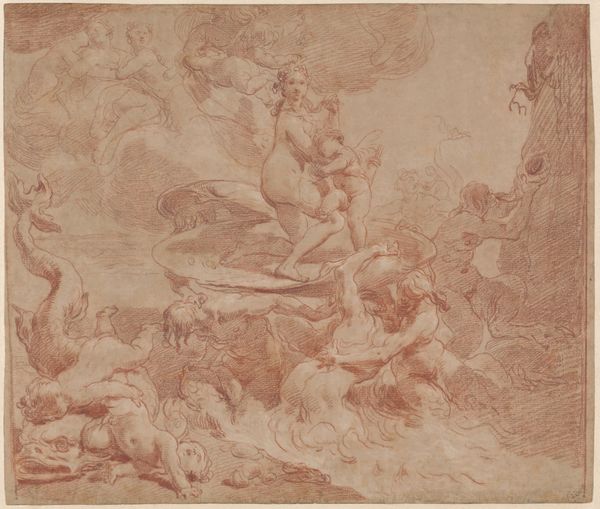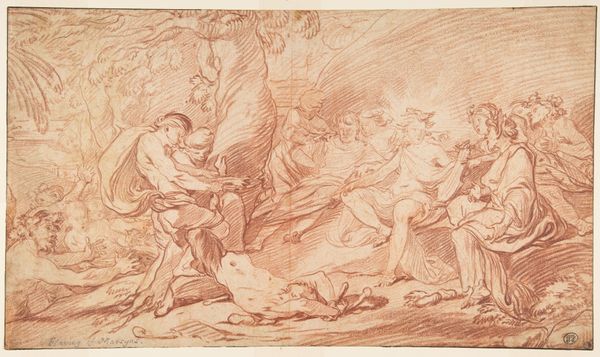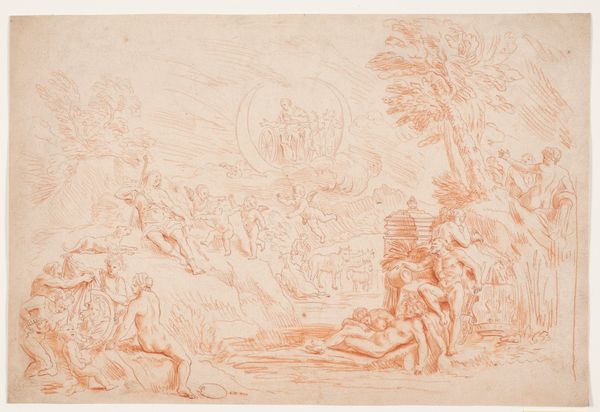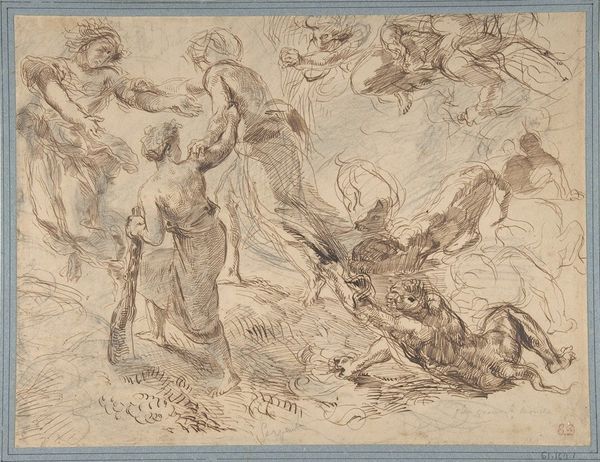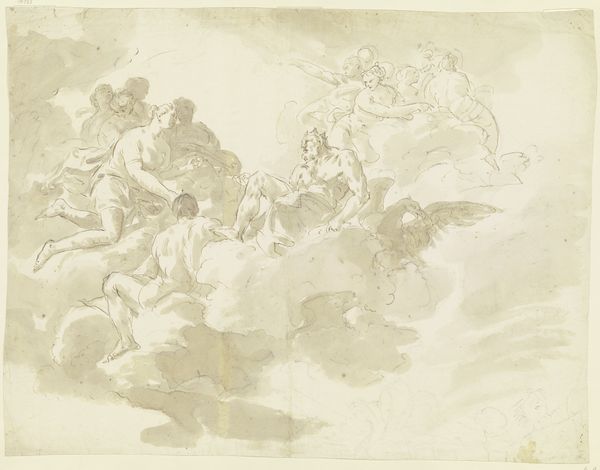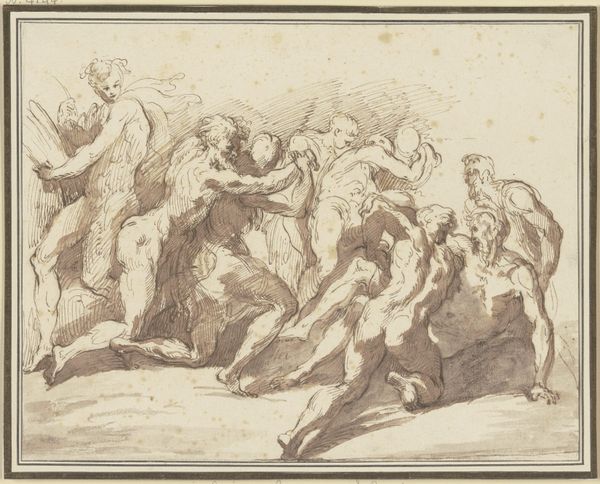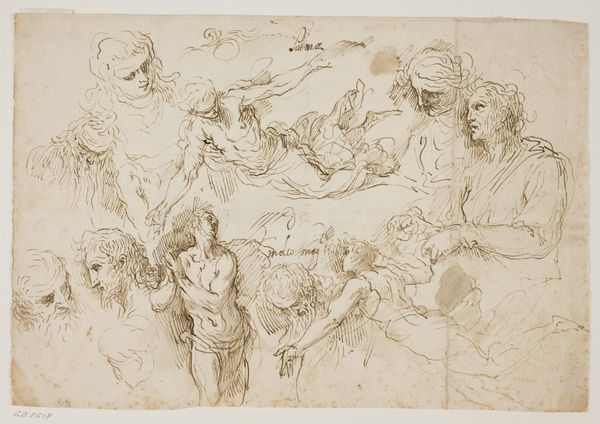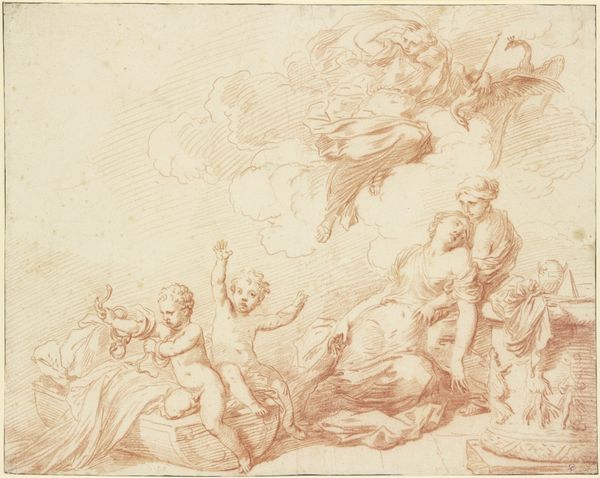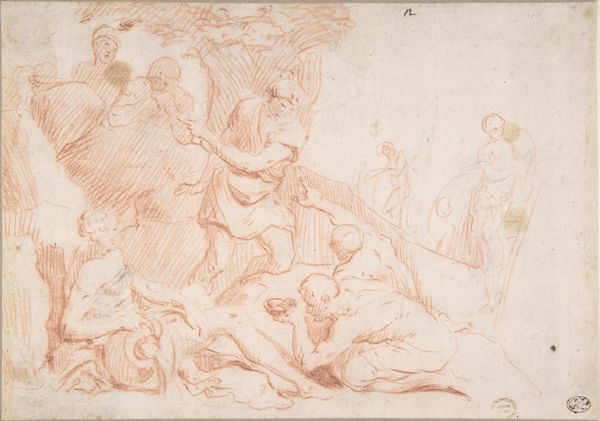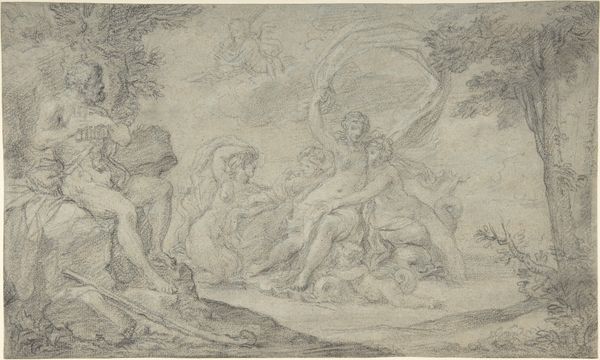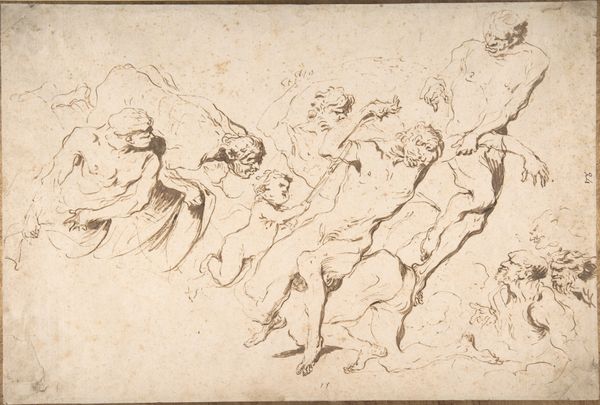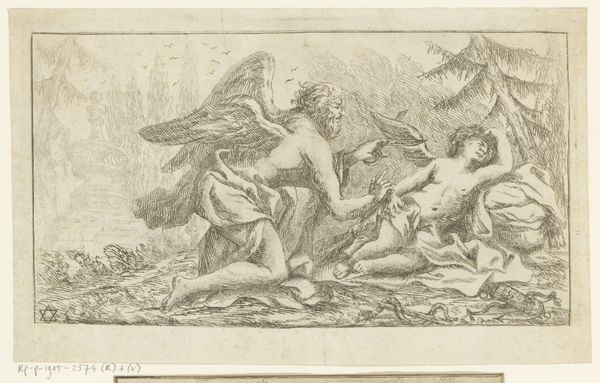
drawing
#
drawing
#
allegory
#
baroque
#
figuration
Dimensions: sheet: 20.3 x 29.3 cm (8 x 11 9/16 in.) support: 31.7 x 41.4 cm (12 1/2 x 16 5/16 in.)
Copyright: National Gallery of Art: CC0 1.0
Curator: The sepia tones give this 17th-century drawing, called "Harpocrates", a dreamlike, ephemeral quality. It’s an allegorical scene, likely after an antique relief. Editor: It feels like waking up in Rome, or from it – the sienna ink bleeds from memory like a gorgeous rust. But why are all these folks floating about, so lackadaisical? Are they waiting for something? Curator: Well, Harpocrates himself, the Egyptian god of silence, is in there – child-like with wings and a cornucopia. This piece draws heavily from the visual vocabulary of the Baroque period. We're seeing a study of figures— how light drapes cloth and contours muscle. The artist would have likely been working with chalk, then pen and brush to create this kind of composition. Editor: That monochrome method… seems so limiting, though effective, clearly. I mean, consider the cost savings if this was for mass-production! Just one pigment source, fewer risks with the alchemy. Beyond pigment, the social history of the *paper* is fascinating too. Its material makeup, the labor conditions in the mill--what does it tell us about the social and economic backdrop from which this allegory was created? Curator: Oh, now you’re going all structuralist on me! And maybe. But can't we enjoy the beauty first, before dismantling the historical power structures inherent in rag paper production? Just for a moment? There's a stillness to it, isn't there? Harpocrates calls for just that: pause. Reflect. Editor: Reflect on the means of production, and who was afforded such leisured reflectiveness, sure. The paper whispers its origins even as it cradles the allegory of silence, of secrets. The grain shows the work, the *process*, inherent to this very art. How very like truth to advertising it is, then! Curator: And like most powerful truths, it's held lightly, on thin, very old paper. Editor: Yes, and bound up in its earthly materials—an emblem for the ongoing materialization of stories.
Comments
No comments
Be the first to comment and join the conversation on the ultimate creative platform.
